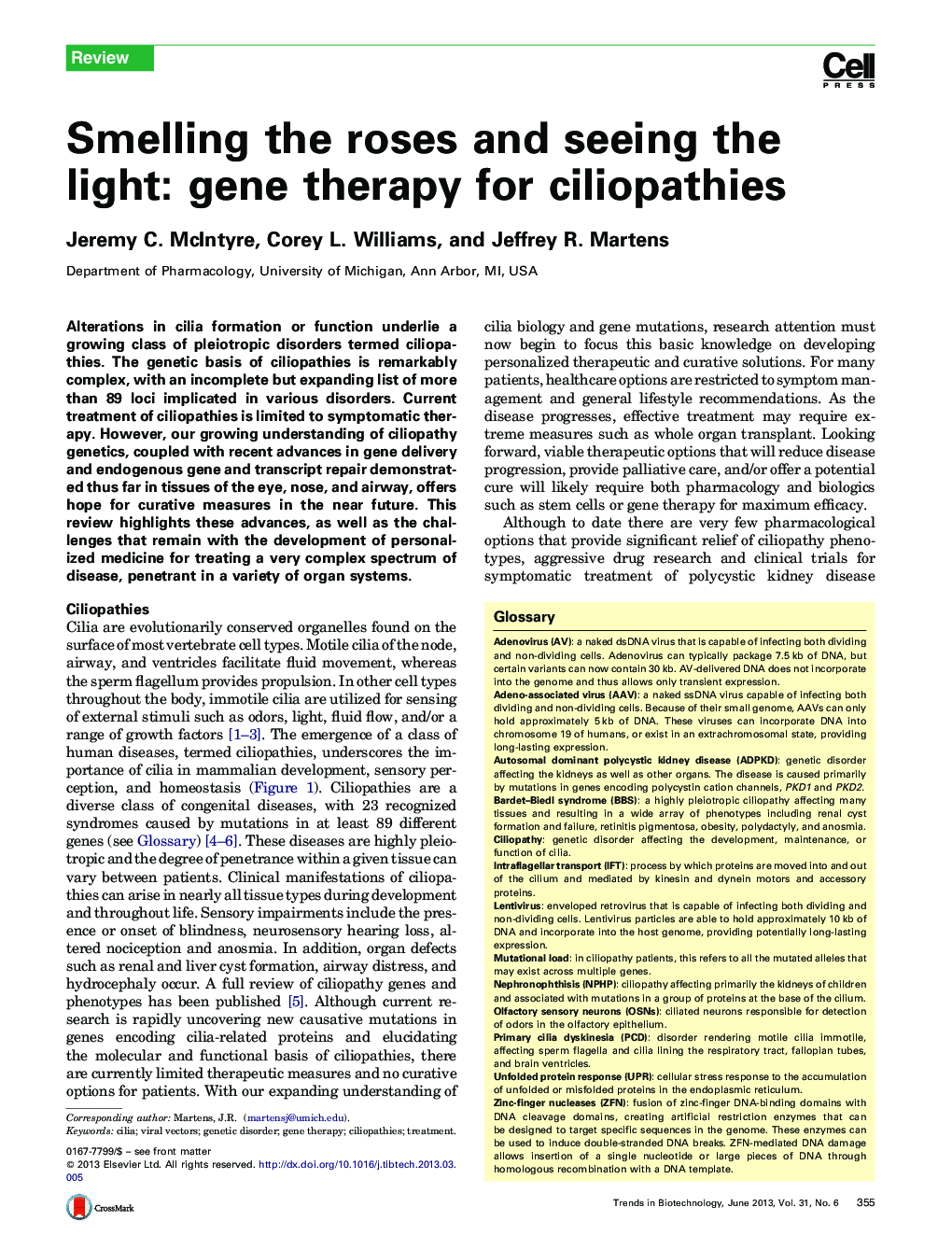| Article ID | Journal | Published Year | Pages | File Type |
|---|---|---|---|---|
| 36991 | Trends in Biotechnology | 2013 | 9 Pages |
•Gene therapies have been successfully used in several mammalian ciliopathy models.•Rescued defects include cilia mobility, vision, and olfaction.•Overcoming challenges presented by pleiotropy remains a goal for effective treatments.•Therapies providing palliative care offer substantial benefits to patients.
Alterations in cilia formation or function underlie a growing class of pleiotropic disorders termed ciliopathies. The genetic basis of ciliopathies is remarkably complex, with an incomplete but expanding list of more than 89 loci implicated in various disorders. Current treatment of ciliopathies is limited to symptomatic therapy. However, our growing understanding of ciliopathy genetics, coupled with recent advances in gene delivery and endogenous gene and transcript repair demonstrated thus far in tissues of the eye, nose, and airway, offers hope for curative measures in the near future. This review highlights these advances, as well as the challenges that remain with the development of personalized medicine for treating a very complex spectrum of disease, penetrant in a variety of organ systems.
